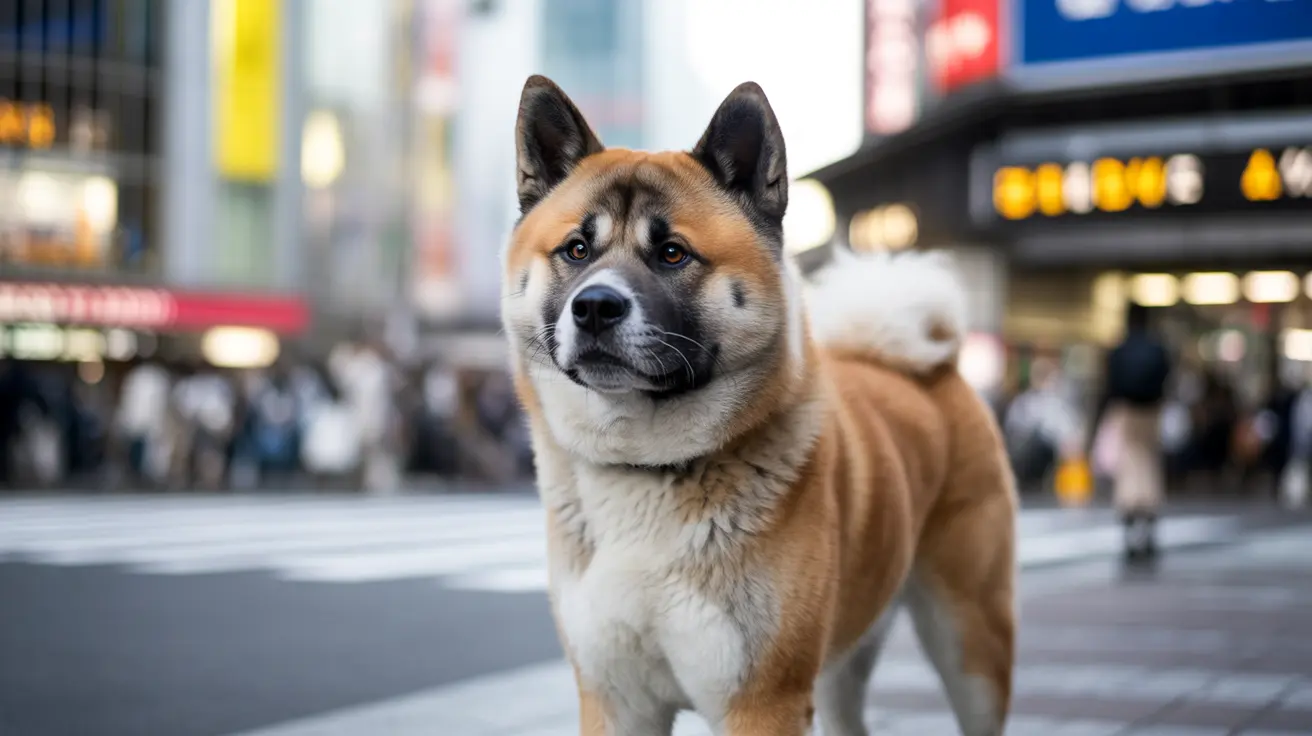In the annals of canine loyalty, no story resonates quite like that of Hachikō, the famous Akita who captured hearts worldwide with his unwavering devotion. Born in 1923 in Japan's Akita Prefecture, this remarkable dog would go on to become not just a national symbol but a global icon of faithfulness that continues to inspire generations.
This extraordinary tale of dedication began when Professor Hidesaburō Ueno adopted Hachikō as a puppy, bringing him to Tokyo in 1924. What followed would become one of the most touching demonstrations of canine loyalty ever recorded, forever cementing the Akita breed's reputation for devotion.
The Legendary Daily Vigil
Every day, Hachikō would accompany his owner to Shibuya Station and return each evening to greet him after work. This routine continued until May 21, 1925, when Professor Ueno suffered a fatal cerebral hemorrhage while at work. Unaware of his master's death, Hachikō continued his daily journey to the station, maintaining his vigil for nearly ten years.
Station workers and commuters began noticing the faithful Akita's daily presence, offering him food and care as he waited patiently for a reunion that would never come. This daily ritual continued until Hachikō's own passing in 1935, marking almost a decade of unwavering loyalty.
The Legacy of Japan's Most Beloved Akita
Hachikō's story gained national attention in 1932 when a major Japanese newspaper published an article about his dedication. He became known as "Chūken-Hachikō" (faithful dog Hachikō), and his tale spread rapidly throughout Japan and eventually across the globe.
A bronze statue was erected in his honor at Shibuya Station in 1934, with Hachikō himself present at the unveiling. Though the original statue was melted down during World War II, a new one was installed in 1948 and remains one of Tokyo's most popular landmarks and meeting spots.
Impact on the Akita Breed
Hachikō's fame came at a crucial time for the Akita breed. In the 1930s, pure-bred Akitas were becoming increasingly rare, with only about 30 remaining in Japan. His story sparked renewed interest in preserving the breed, leading to concentrated conservation efforts that helped save these magnificent dogs from potential extinction.
The Akita breed, known for its dignity, strength, and loyalty, gained international recognition largely due to Hachikō's story. Today, these dogs are cherished worldwide as family companions and guardian dogs, carrying forward the legacy of their most famous representative.
Cultural Impact and Modern Influence
Hachikō's story has transcended cultural boundaries, inspiring numerous films, books, and artistic works. The 2009 Hollywood film "Hachi: A Dog's Tale" starring Richard Gere introduced this touching story to a new generation of audiences worldwide, while in Japan, Hachikō remains a powerful symbol of loyalty and devotion.
His legacy continues to influence popular culture, with the famous meeting spot at Shibuya Station known as "Hachikō Exit" or "Hachikō Square" attracting thousands of visitors annually who come to pay their respects to this legendary Akita.
Frequently Asked Questions
What is the story behind the famous Akita dog Hachikō and why is he celebrated?
Hachikō is celebrated for his extraordinary loyalty, waiting at Shibuya Station for nine years after his owner's death. His daily vigil from 1925 to 1935 became a symbol of faithfulness and dedication, making him a national hero in Japan and a worldwide symbol of devotion.
How did Hachikō influence the preservation and popularity of the Akita breed in Japan and worldwide?
Hachikō's fame drew attention to the declining Akita breed in the 1930s, spurring conservation efforts when only 30 purebred Akitas remained in Japan. His story helped popularize the breed globally and contributed to preserving its pure bloodline.
Where can I find the statue of Hachikō, and what significance does it hold for visitors?
The famous bronze statue of Hachikō stands outside Shibuya Station in Tokyo, Japan. It serves as both a popular meeting point and a memorial that draws visitors from around the world who come to honor his legacy of loyalty and dedication.
What are the unique characteristics and history of the Akita breed related to Hachikō's legacy?
Akitas are known for their loyalty, dignity, and strength. Originally bred as hunting dogs in Japan's Akita Prefecture, they possess a noble bearing and powerful build. Hachikō exemplified the breed's legendary loyalty, helping establish these traits as hallmark characteristics of Akitas.
How has Hachikō's story been represented in movies, books, and popular culture?
Hachikō's story has been adapted into numerous works, including the 1987 Japanese film "Hachikō Monogatari" and the 2009 American remake "Hachi: A Dog's Tale." His story appears in countless books, children's stories, and educational materials, particularly in Japan where he remains a cultural icon.






